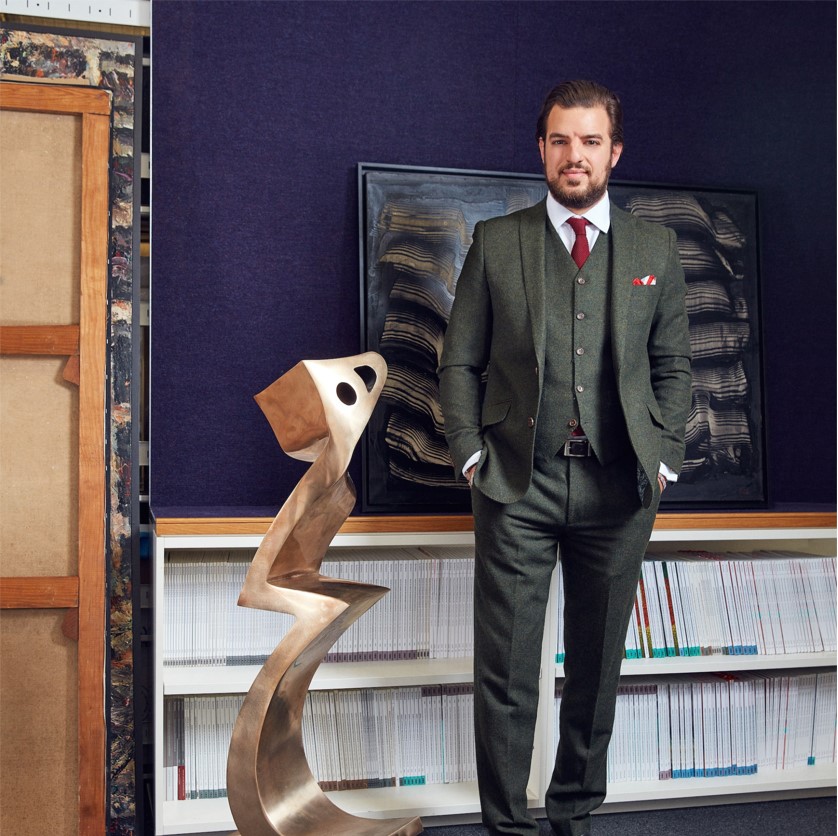Virtual Virtuosos
NFTs are the biggest thing to happen in the art world since Damien Hirst pickled a shark in formaldehyde. Fox Quarterly caught up with Nima Sagharchi of Bonhams to find out why digital masterpieces are art’s new reality.
There are points throughout history when the art world reaches a new peak of fervid creativity, and places that form the crucible for those key moments of cultural cross-fertilisation. Think of Italy during the Renaissance, Paris in the 1920s or New York in the 1960s.
In 2021 there was just such a destination – but the location was virtual. The internet had become the place for creative people to be, with the digital realm suddenly the place to make (and to sell) art. Within this space, one particularly significant new art form began to flourish: the NFT.
But what exactly is this brash new arrival on the international art scene? “An NFT is a ‘non-fungible token’,” explains Nima Sagharchi, Head of Digital Art at Bonhams auction house. “It is a unique line of code registered on a blockchain – effectively an unalterable digital ownership certificate that is stored on an electronic database. It is the same blockchain technology that cryptocurrencies such as Bitcoin and Ethereum use.”

An NFT might be a work of art, a video, a photo or a song, or it could be something totally new – a popular meme or a famous tweet, or even the source code for the World Wide Web itself. What it is doesn’t matter – to be an NFT, it must be registered on a blockchain.
The first NFT is said to have been ‘minted’ (NFT-speak for created) in 2014. But it was in March 2021 that they hit the front pages, when the unknown artist Beeple sold an NFT at auction for $69 million (£51m). Until the previous October, the most Beeple had sold one of his prints for was $100. Dismissed by some as a fad, NFTs were by the end of the year a multibillion-dollar business, rivalling the global art market. Crypto-art pioneers were catapulted into the limelight, while celebrities – and established artists such as Damien Hirst – started to mint NFTs.
Bonhams held its first dedicated NFT sale last June. “NFTs are a new chapter in the history of art, and Bonhams wanted to be part of that,” Sagharchi says. “‘CryptOGs: The Pioneers of NFT Art’ was the first-ever auction to explore the origins of the crypto-art movement – the people who were busy minting NFTs before the global spotlight. The sale was the first curated collaboration between a digital art platform – a place where NFTs are minted, in this case SuperRare – and an auction house.”
The highlight of the sale for Sagharchi was The Death of Cash by the early crypto-artist XCOPY, which sold for $200,312 (£147,362). In 2018, the artist had offered digital NFT prints on Twitter for just £2 – and attracted little interest.

XCOPY has hailed NFTs as “the first and only way to sell my digital artwork in its true form”, but there are many other benefits – for both creators and collectors. “With NFTs there is an unalterable record of provenance on the blockchain that can be traced back to the creator,” Sagharchi says. “For collectors, there is the ease of the transaction. When you buy an NFT, it’s as simple as receiving an email or downloading an app.”
NFTs are not just used by visual and digital artists, however. In December 2021, Bonhams sold Natalia Osipova: Triptych, the world’s first NFTs for ballet. The works, offered by Osipova herself, were included in a traditional art sale and positioned in the context of dance-focused Impressionist art such as Degas. But the significance of Osipova’s NFTs was that for the first time, a dance performance that would otherwise have been a temporary event could now be acquired as a piece of art to last forever.
What’s more, Blockchain technology opens up a way for the creator to receive royalties if their work changes hands for a profit – in the same way that a musician continues to receive royalties from a song years later. Which means that a dancer such as Osipova can benefit from her performance long after the curtain falls.
“The potential uses of NFTs are almost endless,” Sagharchi says. “You can display them like traditional art on digital canvases in the real world. You could have your own online NFT gallery. One obvious next step is into established museums, but will they be displayed within traditional galleries, next to an Old Master? Or will we all be visiting virtual museums within a metaverse – a virtual social world where, far beyond simply seeing works displayed online, you move around as a digital avatar?”
Sagharchi says that the most exciting prospect for NFTs is the potential for collaboration they offer between creators, different platforms, the traditional art world and NFT collectors. For instance, last December Bonhams held an online auction of a seven-layer dynamic NFT, Coldie X John Van Hamersveld The Unfolding Dream: In partnership with Async.

Collectors can own a single layer of the work and the right to alter it; their changes affect how the layer is displayed on the live artwork. All the layers come together to make up the ‘master artwork’, which also has an owner, but an owner who cannot make changes to the individual layers. Each owner has a level of visual control over the work, creating a multitude of different combinations of how it appears.
“Dynamic NFTs are living artworks, in constant flux,” Sagharchi says. “This technology is revolutionary to making art, and, as with NFTs generally, poses questions about how we collect art. The future of art may just be in the metaverse.”
Continue reading Fox Quarterly…
What Matters Most: Inside The UHNW Mindset

